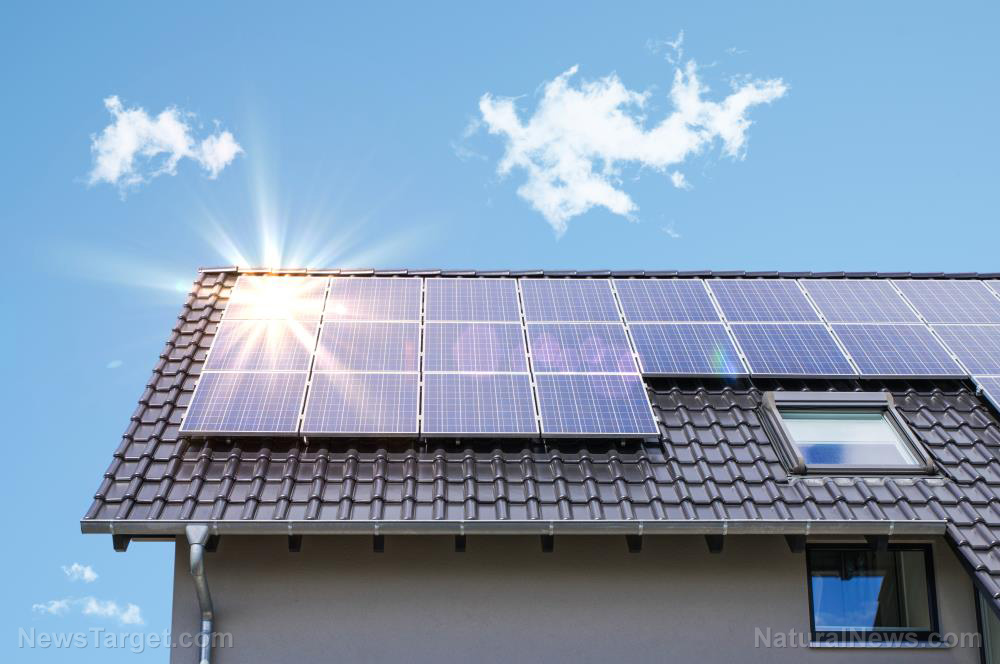NextEra will use solar power to produce green hydrogen
04/18/2021 / By Nolan Barton

NextEra Energy will use solar power from its principal subsidiary Florida Power & Light Co. (FPL) to produce green hydrogen through a 20-megawatt electrolysis system. The hydrogen will then be used to replace some of the natural gas burned at FPL’s Okeechobee Clean Energy Center in Florida.
Unlike blue hydrogen, which is created from fossil fuel sources, green hydrogen is made from non-fossil sources. The $65 million Okeechobee pilot project will “utilize solar energy that would have otherwise been clipped” to create green hydrogen to replace some natural gas, said Rebecca Kujawa, chief financial officer at NextEra — which last year briefly overtook ExxonMobil as the most valuable U.S. energy company.
Hydrogen burns like natural gas without carbon dioxide emissions and can be produced by separating water molecules using electricity. According to industry experts, surplus renewable electricity produced during hours of slack demand can power electrolysis machines to make hydrogen. The goal is to have a store of carbon-free energy that can be dispatched when demand is strongest.
“There’s clearly an opportunity to displace the last 10 percent of the carbon emissions out of the electric sector by manufacturing hydrogen with renewables within the next five to 10 years,” said NextEra Chairman, President and CEO James Robo. “This is a big strategic initiative for us, and we’re going to drive it, and it’s going to be very important for this company over the next decade.”
NextEra playing the long game with its hydrogen initiative
NextEra, one of the biggest developers of wind and solar projects globally, hopes to have the pilot project operational at FPL by 2023.
If hydrogen technology proves to be cost-effective, it would in turn drive “gigawatts and gigawatts and gigawatts and gigawatts of renewable [energy] demand in this country,” said Robo.
“We won’t make any money on it in the next five years, just like we didn’t make any money in batteries in the first five years,” Robo said, noting that NextEra now views batteries as lucrative investments and plans to spend $1 billion on the technology this year.
NextEra has recently disclosed other green energy ventures, including a $20 million installation to create hydrogen with solar power. The company has about 50 potential green hydrogen projects in the pipeline to serve the power, transportation and industrial sectors, according to John Ketchum, president of NextEra’s bulk-power division.
Producing hydrogen, storing it and then using it to generate electricity is inefficient and expensive. The process, known as “power-to-gas-to-power,” returns less than 40 percent of the electricity put in at the start, according to Dharik Mallapragada, research scientist at the Massachusetts Institute of Technology Energy Initiative.
Energy is lost both in breaking the molecular bond between hydrogen and oxygen in the water and in burning the resulting hydrogen in turbines.
“Using power to make hydrogen to make power is in most cases really dumb, because there are so many losses involved in the cycle,” said Thomas Koch Blank, senior principal at Rocky Mountain Institute, a clean energy think-tank.
Rapid-starting natural gas power turbines have become the go-to generation source for grid operators looking to keep the lights on during heat waves and winter freezes.
Green hydrogen could perform the same role, but at a much larger cost. According to Morgan Stanley estimates, even if hydrogen production costs fell more than two-thirds to $1 a kilogram, the price in energy terms would still be $8 per million British thermal units – three times as costly as standard U.S. natural gas. (Related: Enormous supply of clean hydrogen fuel can now be tapped for the hydrogen economy.)
Hydrogen is “not quite economic yet,” said Jeffrey Eckel, chairman and CEO of Hannon Armstrong Sustainable Infrastructure Capital Inc. “But look at storage and wind and solar panel, 10 years ago. I think the trend is absolutely inevitable. Costs are coming down.”
Interest in hydrogen soars as the world tries to curb carbon emissions
As the world scrambles to curb carbon emissions, hydrogen-related projects are being launched everywhere.
Los Angeles, which under California law is required to use 100 percent carbon-free energy by 2045, will convert a coal-fired plant it operates in Utah, initially to natural gas and then to hydrogen. According to manufacturer Mitsubishi Power, the plant’s newly ordered turbines can take a 30:70 blend of hydrogen and gas by 2025 and only hydrogen by the 2045 deadline.
Mitsubishi and a partner have proposed a nearby facility to store green hydrogen sufficient to generate 150,000 megawatt-hours of electricity.
“Hydrogen is that one technology where you can actually do seasonal storage,” said Paul Schultz of the Los Angeles Department of Water and Power. “All of this amount of over-generation that you potentially have in the spring and the fall can be used when you are renewable resource-poor during the summer and the winter.”
Schultz acknowledged that a hydrogen blend would cost more than natural gas, “but we have an environmental commitment to this.” According to Schultz, Los Angeles had approached the Department of Energy about securing low-cost federal funds to help finance the project.
New York-listed New Fortress Energy has launched a business to make green hydrogen for sale to the power, industrial and transport sectors. (Related: Are hydrogen-powered freight trucks ready to roll out?)
German utility Uniper hopes to use renewable electricity produced during the most prolific four hours of each day to make hydrogen for storage in underground structures in Hamburg. These structures were previously used to hold natural gas.
The Hydrogen Council, an industry group, said in a 2017 report that 250 to 300 terawatt-hours a year of surplus solar and wind electricity could be converted to hydrogen by 2030. In comparison, renewables generate a mere 8,000TWh worldwide this year, according to the International Energy Agency.
Follow HydrogenWater.news for more news and information related to the production and uses of hydrogen.
Sources include:
Tagged Under: blue hydrogen, carbon dioxide, carbon emissions, Clean Energy, climate change, electricity, electrolysis, green energy, green hydrogen, hydrogen, hydrogen economy, natural gas, NextEra Energy, non-fossil sources, power grid, power turbines, solar power
RECENT NEWS & ARTICLES
PowerGrid.News is a fact-based public education website published by Power Grid News Features, LLC.
All content copyright © 2018 by Power Grid News Features, LLC.
Contact Us with Tips or Corrections
All trademarks, registered trademarks and servicemarks mentioned on this site are the property of their respective owners.



















